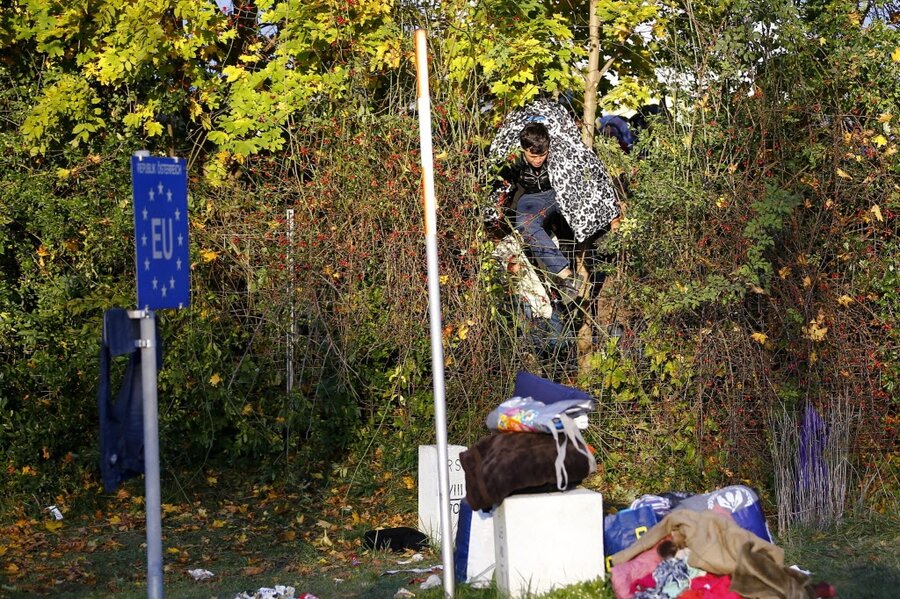Austria's border fence: Why are more nations building barriers?
Loading...
When Hungary built a razor-wire fence along its borders with Slovenia, Croatia, and Serbia, its neighbor to the West, Austria, was a staunch critic. But on Wednesday, Austria announced it would be following suit, with a fence of its own along its southern border.
The government sought to downplay the fence's role as a barrier to entry. “Each fence also has a gate,” Austrian Interior Minister Johanna Mikl-Leitner assured parliament, adding that there would be no “fence around Austria.”
Austria's decision to secure its southern border comes as the European Union struggles to maintain control of a catastrophic migrant crisis, and as the United States struggles to address the 11 million undocumented immigrants living within its borders, waging contentious debates over the rules for future immigration.
Trending now is the question of whether the US should erect a wall to prevent Mexican migrants from entering. A strong advocate for such a wall has been Donald Trump, who reiterated his desire in the GOP debate Wednesday night to see a wall between the US and Mexico – and he says he wants Mexico to pay for it.
Long before 220 BC, when Chinese emperor Qin Shi Huang unified fortifications into what would become known as the Great Wall of China, societies have sought to construct tangible barriers laid over the invisible lines that represented their borders. Constantinople built a ring of fortifications around Istanbul to keep out the Ottomans. The Romans built Hadrian’s Wall to separate their empire from the “barbarians.” And the Berlin Wall, built in 1961, quickly became the defining symbol of the split between communism and the so-called Free World.
The Cold War may be over, but nations are erecting physical barriers more often than before. Last year, the Washington Post cited data gathered by Élisabeth Vallet, a geographer at the University of Quebec in Montreal that showed that barrier construction projects have surged in recent years, with walls now separating countries, territories, and neighborhoods from Israel to Ireland. The walls range from chain-link fences like the one separating Morocco and Spain on the continent of Africa, to a sand bermin the Western Sahara, to barbed wire on the ground in Macedonia.
Why are so many walls going up?
"We assumed September 11 triggered the proliferation of walls in the world," Dr. Vallet told Time Magazine’s Tara John, "but we backtracked and discovered that the walls were on the minds of states’ already."
“People were feeling like their way of life was impacted by globalization, that the way to define themselves is to define themselves against the other,” she said.
"This is largely due to the sense of fear of the 'outsider' in a post 9/11 world," writes Ben Gurion University political geographer David Newman, in a blurb on "Borders, Fences and Walls," a collection of writings edited by Vallet. "Part of this is real, much of it is a social construction which enables governments to justify the establishment of new border fences as a means of keeping out the 'alien' and controlling their own territory."
Yet unlike during the Cold War, politicians are expressing more concern about the movement of financially desperate people than they are of armies.
But perhaps the greater risk of more walls popping up is that it could create a “domino effect:” Following Austria, Slovenia announced plans to build its own fence.







